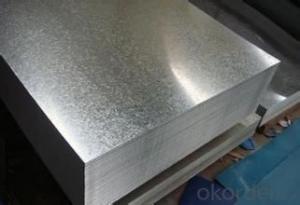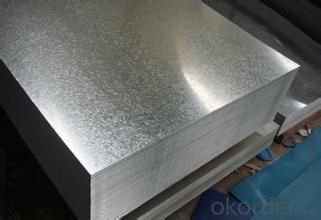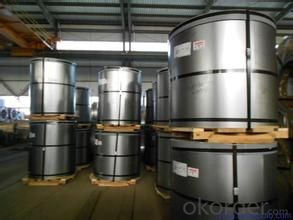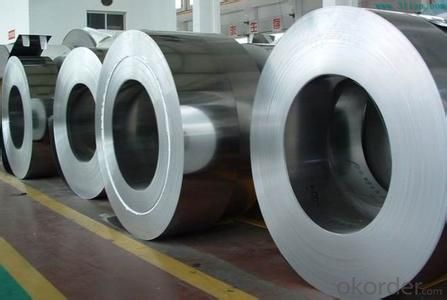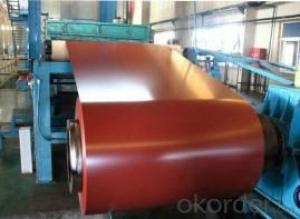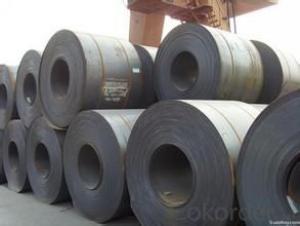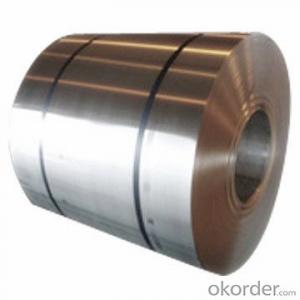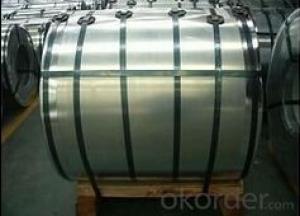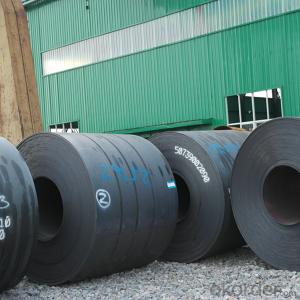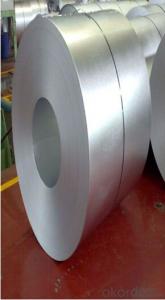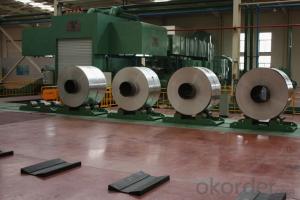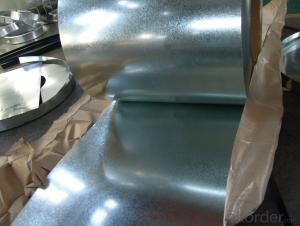Prime Quality Hot Dipped GI Steel Sheets in Coils SGCC Grade
- Loading Port:
- Tianjin
- Payment Terms:
- TT OR LC
- Min Order Qty:
- 100 m.t.
- Supply Capability:
- 10000 m.t./month
OKorder Service Pledge
OKorder Financial Service
You Might Also Like
Prime Quality Hot Dipped GI Steel Sheets in Coils SGCC Grade
1.Structure of Prime Quality Hot Dipped GI Steel Sheets in Coils SGCC Grade
Prime Quality Hot Dipped GI Steel Sheets in Coils SGCC Grade is one kinds of building material on construction. Steel sheet in melting zinc trough, the sticking of a layer of zinc sheet. At present mainly adopts continuous galvanizing process, namely the continuous roll of steel plate in the melt zinc plating tank made of galvanized steel sheet; Alloying of galvanized steel. This kind of steel plate is made by hot dip method, but after the slot, immediately heated to a temperature of about 500 ℃, it make the generation of zinc and iron alloy membrane. This kind of galvanized volumes with good coating of the sex and weldability.
Color coated steel coil(ppgi) is made by the processes of chemical preconditioning, first coating, precision coating and so on through a continuous rapid unit internationally in recent three decades. Its quality is more uniform and stable than the one whose surface of the formed metal is coated single or brushed one.
2.Main Features of Prime Quality Hot Dipped GI Steel Sheets in Coils SGCC Grade.
1) Rust-proof
2) Water-proof
3)Durable using
3. Prime Quality Hot Dipped GI Steel Sheets in Coils SGCC Grade Images
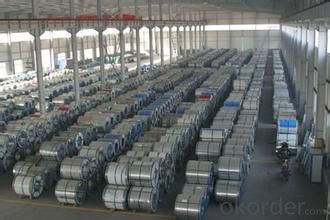
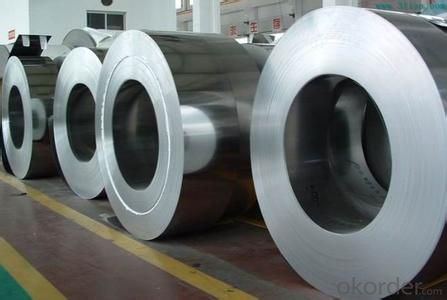
4. Prime Quality Hot Dipped GI Steel Sheets in Coils SGCC Grade Specification
1)Based raw material: Hot rolled steel coils or Cold rolled steel coils
2) Thickness
3) Width
4)Coating mass
5) Spangle
6)Surface treatment
7)Coil inner diameter
5.FAQ of Prime Quality Hot Dipped GI Steel Sheets in Coils SGCC Grade
We have organized several common questions for our clients,may help you sincerely:
①How about your company?
A world class manufacturer & supplier of castings forging in carbon steel and alloy steel,is one of the large-scale professional investment casting production bases in China,consisting of both casting foundry forging and machining factory. Annually more than 8000 tons Precision casting and forging parts are exported to markets in Europe,America and Japan. OEM casting and forging service available according to customer’s requirements.
②How to guarantee the quality of the products?
We have established the international advanced quality management system,every link from raw material to final product we have strict quality test;We resolutely put an end to unqualified products flowing into the market. At the same time, we will provide necessary follow-up service assurance.
③How is the packaging and delivery?
Seaworthy exporting Package with the steel material cover and the delivery term is based on the project.
- Q: How are steel coils inspected for uniformity using statistical analysis?
- Various techniques and procedures can be employed to inspect steel coils for uniformity using statistical analysis. The primary goal is to guarantee that the coils meet the required specifications and exhibit consistent quality throughout. One prevalent inspection method involves obtaining a representative sample of steel coils from a batch or production run. These coils are selected randomly to ensure a fair representation of the entire batch. Statistical analysis is then conducted on this sample to assess the uniformity of the coils. The initial step entails measuring various physical properties of the coils, such as thickness, width, weight, and surface defects. These measurements are recorded for each coil in the sample. The collected data is subsequently subjected to statistical analysis, encompassing mean, standard deviation, and range calculations. By calculating the mean values of the measured properties, one can determine the average values for thickness, width, weight, etc. These mean values can be compared to the desired specifications to identify any deviations or inconsistencies. The standard deviation serves as an indicator of the variability or dispersion of the data, revealing the degree to which the coils adhere to the desired specifications. A smaller standard deviation denotes greater uniformity. Furthermore, range calculations can be executed to ascertain the difference between the maximum and minimum values of the measured properties within the sample. A smaller range implies a higher level of uniformity. Statistical analysis can also incorporate the use of control charts, such as X-bar and R-charts, to visually track the variation in the measured properties over time. These charts offer a graphical representation of the data, facilitating the identification of any trends or out-of-control conditions. In summary, statistical analysis provides a systematic approach to evaluating the uniformity of steel coils by providing objective measurements and statistical indicators. By analyzing the collected data, manufacturers can detect any deviations from the desired specifications and implement appropriate corrective measures to ensure consistent quality throughout the production process.
- Q: What is the role of steel coils in the manufacturing of agricultural machinery?
- Steel coils are used in the manufacturing of agricultural machinery to provide strength, durability, and structural integrity to the equipment. They are typically used to form the main body and framework of the machinery, ensuring it can withstand heavy loads, harsh environments, and repetitive use. Additionally, steel coils are often used to fabricate specific components, such as blades, cutting edges, and structural supports, which are crucial for the proper functioning of agricultural machinery in various farming operations.
- Q: What is the role of steel coils in the production of industrial machinery?
- Steel coils play a crucial role in the production of industrial machinery as they serve as the raw material for various components and parts. The coils are often used to fabricate structural frames, gears, shafts, and other essential elements that provide strength, durability, and stability to the machinery. The versatility and strength of steel make it an ideal material for withstanding the rigorous demands of industrial applications, ensuring the reliability and performance of the machinery.
- Q: How are steel coils used in the production of roofing systems?
- The production of roofing systems involves the utilization of steel coils in various ways. Initially, the steel coils undergo unrolling and are then fed into a machine, where they are cut to the desired length for the roofing panels. Typically, these coils are composed of galvanized steel, which is coated with a layer of zinc to protect against rust and corrosion. Once the coils have been cut, they are subsequently passed through a roll-forming machine. This machine is responsible for shaping the steel into the necessary profile for the roofing panels. The specific shape of the panels may differ depending on the design and functionality of the roofing system. Following the formation of the steel, it may undergo additional processes, such as embossing or stamping, to incorporate texture or patterns onto the panels. This aids in enhancing the visual appeal of the roofing system and providing it with a distinct appearance. After the steel panels have been formed and processed, they are coated with supplementary protective layers or finishes, such as paint or polymer coatings. These coatings further augment the durability of the roofing system and offer resistance against weather elements, UV rays, and corrosion. The final step in the production of roofing systems entails the installation of the steel panels on the roof. Typically, the panels are secured to the roof structure using screws or nails. The panels are designed to interlock, ensuring a secure and watertight installation that safeguards against leaks and moisture infiltration. In conclusion, steel coils play a vital role in the production of roofing systems, providing a durable and long-lasting material that can withstand harsh environmental conditions. The versatility of steel permits various design options and customization, making it a favored choice for roofing applications.
- Q: What's the best material for color coated steel coil?
- Galvanized steel sheet with hot-dip galvanized or zinc plated surface.
- Q: If you combine stainless steel with gold, does that make stainless gold?
- Stainless steel, I believe, was an actual trade name of a british cutlery company's knives, once the ability to create iron-chromium alloys was mastered. Stainless steel's main alloying agent that prevents it from rusting, is Chromium. The Chromium in the steel creates an protective layer (not unlike rust), which acts as a protectant for the rust-prone iron...keeping real rust away. I am no metallurgist, but I have not heard of gold being used as an alloying agent in common steels. I'm not even sure they would mix. Not all metals can be stirred together successfully. Even if gold could be used as an alloying agent for steel, it would need to be in such a small percentage, you would not end up with a metal that was gold in appearance...so it would still look like steel of some sort. The funny part is, gold is already stainless, and does not tarnish or rust as it is.
- Q: How are steel coils made?
- Steel coils are made through a process called hot rolling, where steel slabs are heated and passed through a series of rollers to reduce their thickness and shape them into long, coiled strips. This process helps enhance the steel's strength and flexibility, making it suitable for various industrial applications.
- Q: I'm doing a project on stainless steel dining utensils and its a little more difficult than i thought it would be. There are no sites on the web that tells the creator or when it was first used. There's no sites that that i can see of that talk about the history of stainless steel dining utensils, only dining utensils in general. Please help, i can't change my project now ):
- The booklet 100 years of WMF (WMF: Württembergische Metallwarenfabrik / Wurttemberg Metal Ware Factory) includes the patent application (or better: trade mark application) for stainless Cromargan Steel for the production of cutlery in 1926. Cromargan was the company's fantasy name for stainless Krupp V2A steel. Page 86 (unfortunately WMF is a German company, the booklet therefore is in German). Has nice pictures anyways. Appendix: I found the text (a bit cut however) in English language (without images and booklet, just HTML). See below.
- Q: How are steel coils inspected for surface finish after processing?
- Steel coils are inspected for surface finish after processing through visual inspection techniques such as using specialized lighting and magnification tools to detect any imperfections, scratches, or blemishes on the coil's surface.
- Q: How are steel coils used in the manufacturing of tools?
- Steel coils are often used in the manufacturing of tools as they provide a sturdy and durable material to create various components of the tools. The coils are shaped and cut into specific sizes and shapes to form the tool's body, handles, or blades. This allows for the production of high-quality tools that can withstand heavy use and provide the necessary strength and reliability required for different applications.
Send your message to us
Prime Quality Hot Dipped GI Steel Sheets in Coils SGCC Grade
- Loading Port:
- Tianjin
- Payment Terms:
- TT OR LC
- Min Order Qty:
- 100 m.t.
- Supply Capability:
- 10000 m.t./month
OKorder Service Pledge
OKorder Financial Service
Similar products
Hot products
Hot Searches
Related keywords
